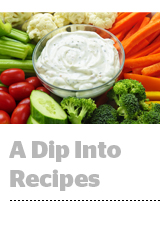 Here’s the central mystery of our time: What will Amazon let brands do on Alexa?
Here’s the central mystery of our time: What will Amazon let brands do on Alexa?
That’s something dressing and ingredients manufacturer Hidden Valley is testing right now, via an integrated marketing product from Allrecipes designed to link its native inventory to grocery orders on AmazonFresh.
Clorox-owned Hidden Valley and other grocery brands work with Allrecipes to incorporate branded products into recipes – like suggesting “Hidden Valley ranch dressing” instead of a generic “ranch dressing.”
The partnership takes it a step further by linking the Allrecipes page and an AmazonFresh delivery cart.
There’s no advertising on Alexa, but since Hidden Valley has a deal with Allrecipes to insert its brand into actual recipes, Alexa will dutifully name the brand with the ingredients, because Alexa recipe requests by default return Allrecipes content.
Online ordering and grocery delivery “is a relatively small but strategically important and growing” part of Hidden Valley’s overall business, said Brian Steinbach, the brand’s marketing director.
And brands are pushing to get into audio-based grocery delivery, said Corbin de Rubertis, Meredith’s VP and GM of shopper marketing, because Amazon services like AmazonFresh and Alexa prefer to re-up previous purchases than offer a virtual shelf of options.
The partnership with Hidden Valley is about data, even if Amazon restricts Alexa and AmazonFresh campaign insights, he said.
“We’re still waiting to see what kind of data [Amazon’s Alexa service] will share back,” de Rubertis said. Amazon may provide broad data like the number of transactions and overall sales numbers, for instance, but isn’t going to provide attribution-level data that could inform future targeting for Hidden Valley.
Still, there are data crumbs that Allrecipes and brands like Hidden Valley can put to use.
For instance, appetizers and smaller dish recipes are more often requested and then ordered from mobile devices, while slow cooker and planned meals tend to come from desktop sites – which could help optimize recipe recommendation or targeting based on the likelihood of grocery orders.
Hidden Valley has its own Amazon storefront, distributes through Amazon third-party sellers and is available on Amazon delivery platforms Prime Pantry and
AmazonFresh, but it only gets transaction data on its first-party sales or other aggregated data through partnership services, Steinbach said.
Brick-and-mortar supermarket leaders like Walmart, Target and Kroger now offer sophisticated digital targeting platforms as well that can draw from either advertising or shopper marketing budgets, he said.
But the Amazon deal is particularly attractive because it potentially closes the loop directly on transactions, while retailers tend to rely on brand lift and proxy indicators of success, or if they connect to sales do so through a third-party ecosystem of payment partners.
Precise attribution would be nice, he said, but Hidden Valley can’t wait on the sidelines while consumer habits evolve “just because it’s a challenge to get all the data we want.” Hidden Valley’s partnership with Allrecipes is an example of “how the lines are blurring between what’s advertising, what’s shopper marketing and what’s just awareness,” Steinbach said.
This post was syndicated from Ad Exchanger.

More Stories
Daily Wire Welcomes Perplexity to Advertise on The Ben Shapiro Show
Here’s the Roundup for the Week Ending March 7
Aflac’s Dan Amos Reveals How He’s Successfully Held Onto the CEO’s Job for 35 Years